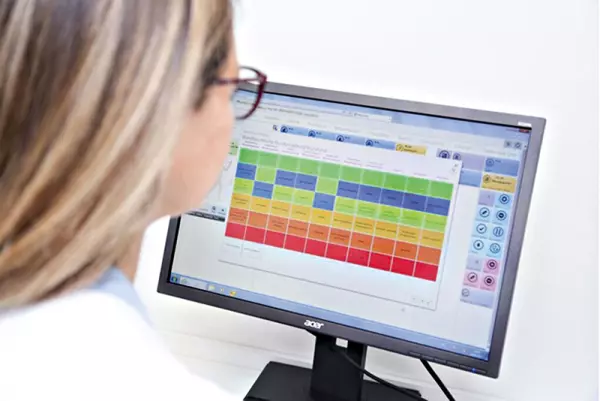
(05/2022) Corona came and the supply of sub-segments of the medical device market went to its knees in Germany. The Federal Association of Medical Technology operated a cause analysis. The realization: There was less a shortage, but above all an allocation problem. The idea of a "digital inventory platform for supply-critical medical products" was born in 2020.
Some time has passed in the meantime. So it's time to call up the status quo at BVMed. In conversation with MTD is Dr. Meinrad Lugan, CEO of BVMed, questions and answers. His central message: The medical device industry is ready for smart solutions to better organize the distribution of supply-critical medical devices in crisis situations via an inventory database with open GS1 interfaces.
Dr. Lugan, due to the negative experiences regarding the supply of medical devices in the first Corona year, BVMed proposed the creation of a "digital inventory platform for supply-critical medical devices" in May 2020. What were the specific triggers for this initiative?
At the beginning of the Corona crisis, there was an explosion in demand for some medical devices and pharmaceuticals for intensive care. The extraordinarily high dependency on non-European manufacturers for some selected supply-critical products, such as medical protective equipment, became apparent. In addition, there were spontaneous and multiple orders, as well as uncoordinated double orders, which led to delivery bottlenecks. Another factor in these first weeks of the pandemic was chain reactions from “protectionist” activities by some states, which disrupted complex supply chains.
However, the following finding from our analysis of what happened in the early days is interesting: for more than 80 percent of all supply-critical products, there was no shortage at all, but a distribution problem. A crisis warehouse or crisis production capacity would only have been necessary for less than 20 percent of relevant products.
We could get most of this under control with smart digital solutions. For this reason, BVMed has developed the concept of a "digital inventory platform for supply-critical medical products" as a solution to politics.
From the point of view of the association, what points speak in favor of creating such a digital inventory platform?
If delivery bottlenecks are not so much due to a lack of production as to poor coordination and distribution, then political decision-makers need one thing above all in times of crisis: transparency in real time. Because that way you can solve the distribution problem. And that is exactly what a digital inventory platform can do.
What would be the concrete advantages?
Real-time visibility is a very tangible benefit. I would even say: in times of crisis it is the most important thing. The central question is: “How do we achieve









